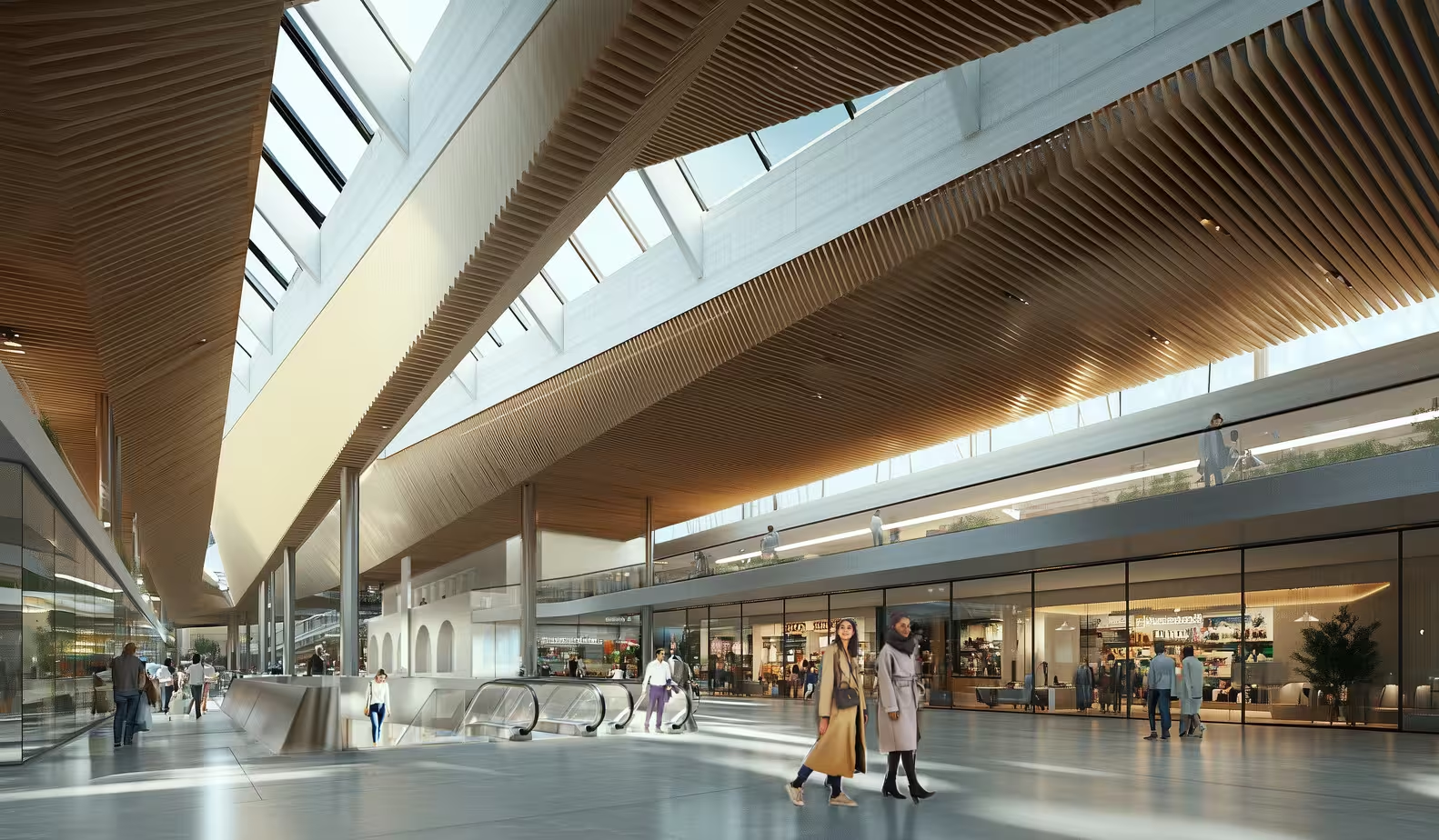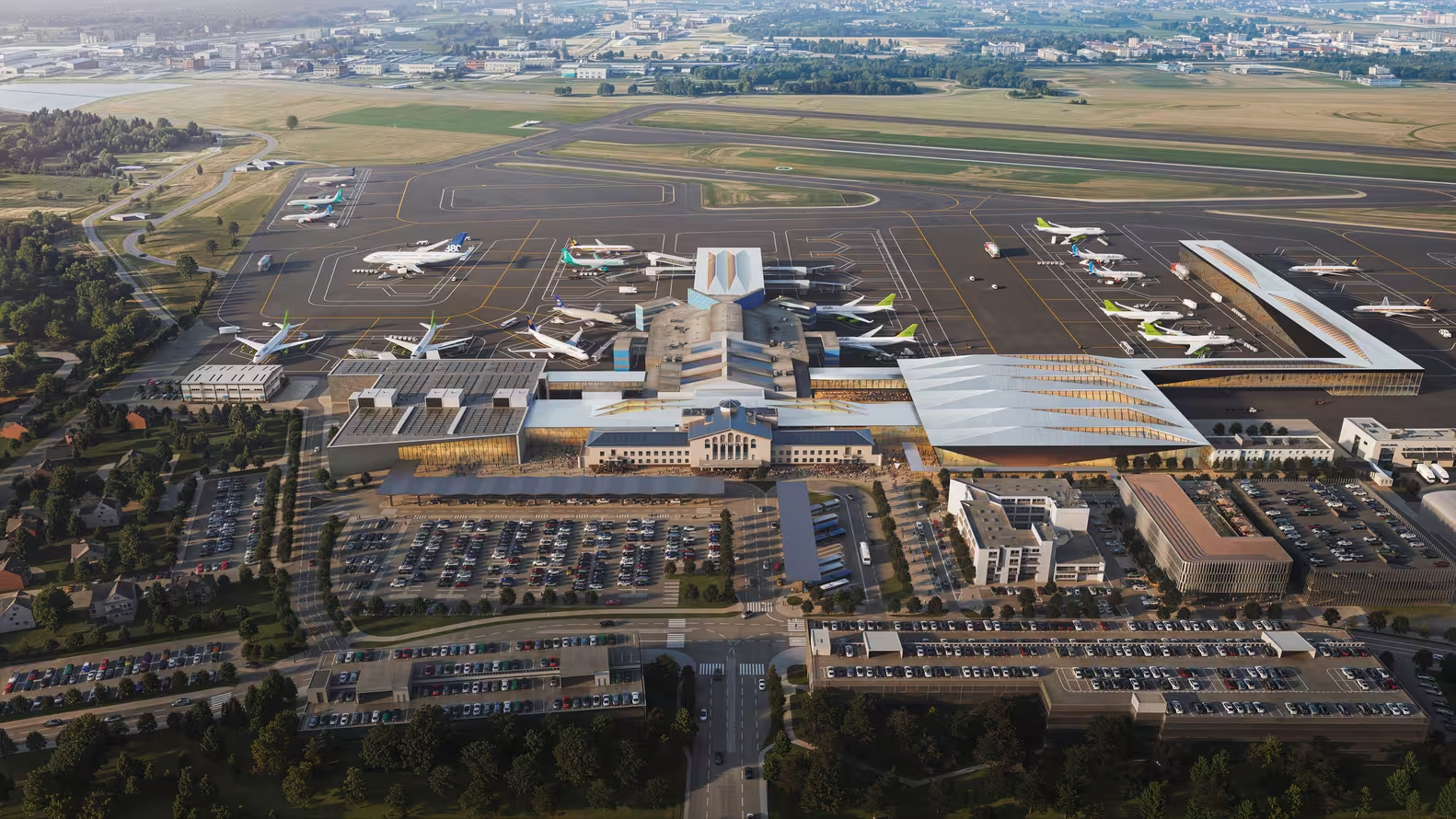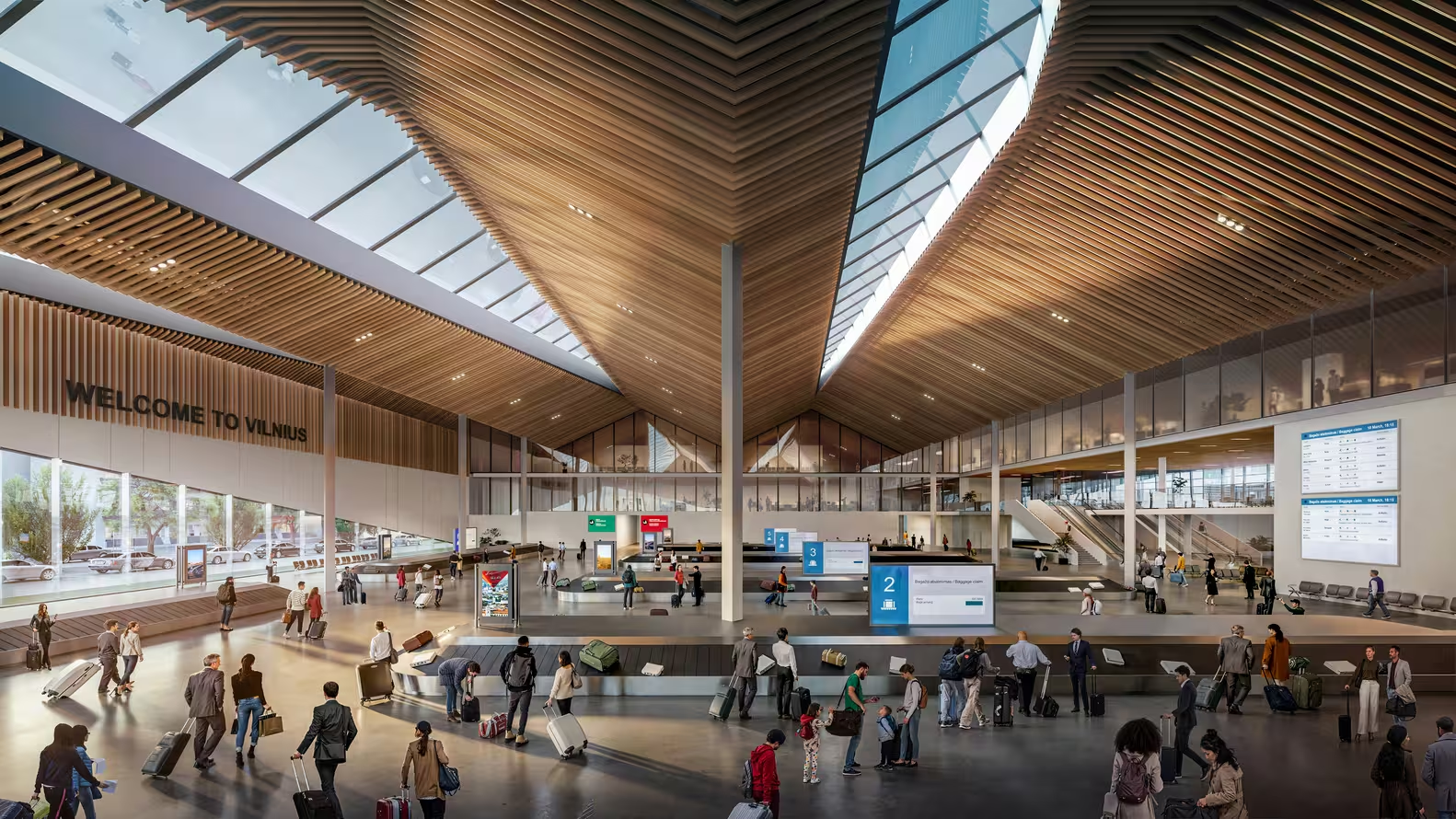4 Minutes
Zaha Hadid Architects Selected for State-of-the-Art Vilnius Airport Terminal
Lithuanian Airports has revealed Zaha Hadid Architects as the winner of its prestigious international competition to create a next-generation arrivals terminal at Vilnius Airport. Integrated into the airport’s ambitious infrastructure expansion, this pioneering design will work alongside the newly operational departures terminal, empowering Vilnius Airport to serve up to 10.6 million passengers per year. The project positions Lithuania as a central technology-driven hub in the Baltic region, supporting long-term growth in global air travel and transport connectivity.

Innovative Architectural Design Meets Digital Technology
Drawing inspiration from Lithuania’s rich cultural heritage, the terminal’s design integrates traditional Baltic motifs into a sleek, contemporary structure. The modular architecture is inspired by the rhombus, echoing patterns rooted in regional folklore, giving the terminal a distinctive, technology-forward identity. This unique geometric approach enhances both aesthetics and passenger navigation, with the intelligent orientation of the building optimizing natural light, clear sightlines, and a seamless flow for travelers.
As part of a comprehensive master plan, the new arrivals terminal is set to become an essential component of Airport Plaza—a multi-modal transport hub. This facility will connect directly with the future Rail Baltica high-speed rail line, local and regional train services, and a fully integrated network of buses, taxis, bike paths, and pedestrian walkways. The design supports the development of smart cities and future-proof transport ecosystems.

Product Features: Sustainability & Technology Integration
Inside, the terminal pays tribute to Lithuania’s sodai—intricately crafted straw gardens recognized by UNESCO—through a pleated timber roof derived from sustainable local forests. This biomimicry is further elevated by advanced engineering, with rhomboid and triangular skylights introducing abundant natural light, reducing reliance on artificial lighting and enhancing environmental comfort.
The terminal is engineered for flexibility, with its modular roof system capable of evolving alongside the latest airport and aviation technologies, ensuring scalability for new digital infrastructure and smart building applications.

Comparative Edge and Environmental Advantages
Setting a new benchmark in airport sustainability, the project targets an 'Excellent' BREEAM rating. It employs double-insulated glazing, hybrid natural ventilation, and adaptive smart systems to maximize energy efficiency, minimizing environmental impact while supporting optimized passenger management. A rooftop array of around 13,000 m² of solar panels, in addition to integrated rainwater harvesting, stormwater mitigation, and greywater recycling systems, will make the terminal a model for green airport technology worldwide.

Use Cases and Market Relevance
This next-generation terminal positions Vilnius Airport as a cornerstone for business and tourism in the Baltic region. Travelers will enjoy a technology-powered, intuitive, and sustainable environment, while the facility’s smart transport links cater to the needs of modern urban mobility. By embracing digital transformation, modular construction, and energy-efficient innovation, Vilnius Airport is poised to meet rising passenger expectations and set new standards in airport design..avif)
Global Impact and Zaha Hadid Architects' Ongoing Innovation
Zaha Hadid Architects remains a pioneering force in global infrastructure and architectural design. In addition to recent projects like the Western Sydney International Airport in Australia and the adobe-inspired Asaan Museum in Saudi Arabia, the firm has revealed a visionary master plan for Khalid Bin Sultan City in Sharjah, UAE. With each project, Zaha Hadid Architects leverages digital innovation, sustainability, and cultural context to reshape the future of aviation and urban spaces.
Save this picture!



Comments